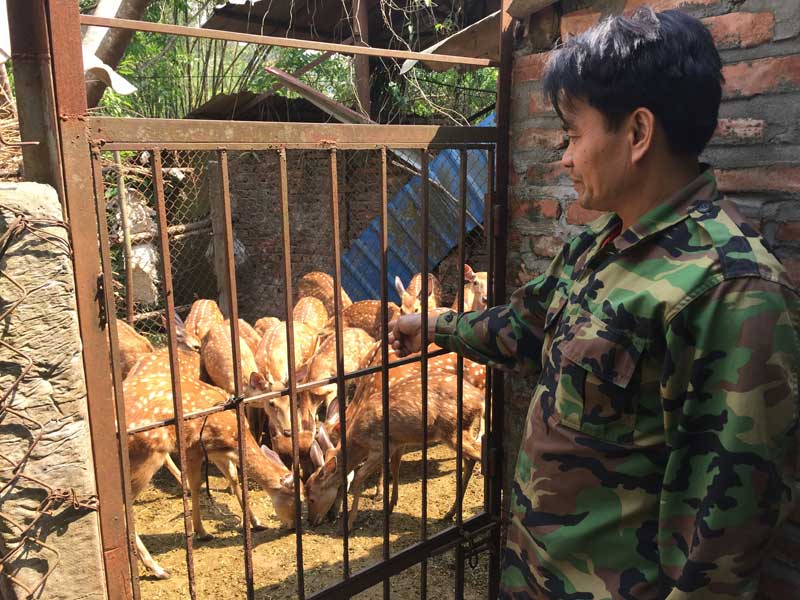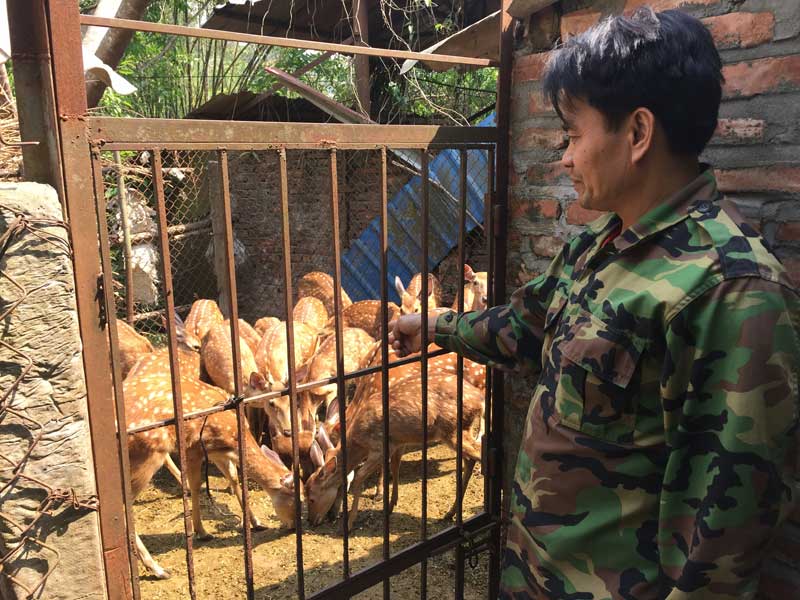


Realizing the potential and advantage to
develop the model, he bought a couple of deer on trial farming. Initially, he
encountered many difficulties because of not grasping the technique and no
experience. Therefore, he tried to learn how to build the deer farms to take
the antler in Ha Tinh.
At present, Mr. Thang's deer group has
expanded over 30 deers, including 10 male deers. The male deers, who has been
fed for over a year will start growing antler for being taken. The female deer
will start reproducing after 2 years old, each litter one year. With the
breeding time of 1 year / time, the deer antler after harvest reached the
standard of 500 - 700 grams, the selling price was ranged from 2.5 to 3 million
per 100 grams. In addition, deer meat is also popular in the market with the
price of 250,000 VND / kg of male deer meat, 100,000-150,000 VND / kg of female
deer meat. In 2017, after deducting expenses, Mr. Thang's family earned over 80
million VND. Products are widespread selected in the region and surrounding
areas for prestige and quality.

The raising deer model of the family of
Veteran Nguyen Minh Thang, Nam Son Union, Lam Son commune (Luong Son), earning
over 80 million VND per year.
Mr. Thang added: The advantage of the model
of raising deer for antler is the one-time investment, but the harvesting cycle
can last from 10 to 15 years. Compared with agricultural development, this
model gives income 4-5 times higher. Besides, deer is a wildlife animal and has
high resistance, they are not easy to get sick. In addition, the food source
for deer is quite rich, various, the farmer can take advantage of fresh grass
and leaves. However, it is noteworthy when raising deer that there is no need
of grazing area, but the raising system must always be clean and dry to avoid
the diseases, such as scabies, boils.
Recognizing the economic benefits from the
deer raising model, some households in the area have visited, learned the
method from the family of Veteran Nguyen Minh Thang. Currently, Mr. Thang has
provided technical guidance, providing seedlings deer for 4-5 households in the
district. After the pilot culture, some households had an income equal to the
investment capital for the model development.